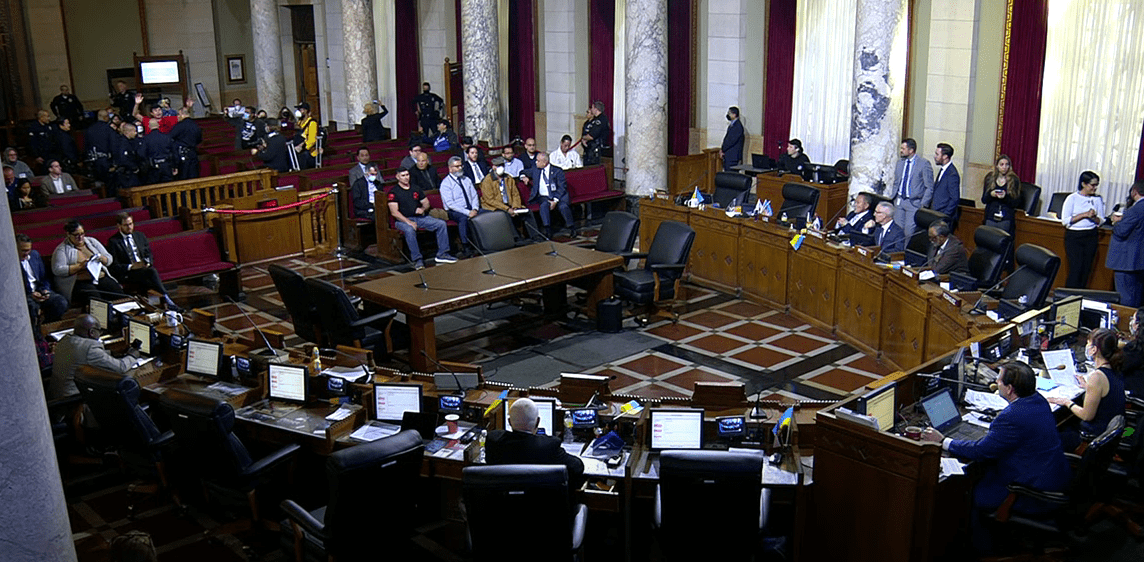Riverside County supervisors Tuesday signed off on the disbursal of $10.99 million in state grant funds for homeless relief, mainly targeting individuals dwelling in encampments along the Santa Ana River bottom.
The California Business, Consumer Services & Housing Agency’s “Encampment Resolution Funding” was awarded to the county Department of Housing & Workforce Solutions, which will serve as administrator of the funds, allocating them to agencies and cities seeking to remedy the ongoing problems associated with illegal habitations within the river bottom, from Highgrove to the east and the Orange County line to the west.
The agency said entities will use the funding to engage in “innovative service delivery models and cross systems collaborations that support individuals experiencing homelessness in encampments, (moving them) towards a meaningful path to safe and stable housing, using non-punitive, low- barrier, person-centered … approaches.”
Prior efforts relying on grant monies have led to more than 300 transients being contacted by representatives from the county, nonprofits and municipalities, resulting in close to 100 voluntarily relocating to transitional housing or other alternate lodgings, to at least initiate the process of leaving life on the streets, according to the Department of Housing & Workforce Solutions.
Among beneficiaries of the latest grant award will be the cities of Corona, Jurupa Valley, Norco and Riverside, as well as the county Department of Animal Services, Housing Authority and the Riverside University Health System, which will receive the largest allocation, totaling $3.6 million, going to behavioral health treatment programs, officials said.
Last week, an ordinance approved by the Riverside City Council prohibiting encampments in the river bottom space within municipal boundaries went into effect.
Ordinance No. 9.04.600 declares that camps or other temporary living facilities are illegal, barring “sitting, lying, sleeping” or maintaining habitable space in the area.
“While many … unsheltered persons experiencing homelessness live in urban centers, a growing number have taken refuge in the Santa Ana River bottom or more remote canyon areas,” according to the measure. “As more people, both housed and unsheltered, live within high fire zones, the risk of fires starting and causing harm and loss of life has also increased.”
Two-thirds of the brush fires that crews battled in the river bottom between the first half of 2017 and the first half of 2022 were human-caused, according to data collected by the Riverside Fire Department. Blazes routinely erupt due to cooking, warming and debris fires in transient camps. Properties have been damaged, along with public infrastructure, and residents have been placed under evacuation orders on numerous occasions.
No civil penalties are established under the ordinance, which recognizes that the city will provide resources, including temporary shelter, to those impacted. The new regulations permit police, fire, code enforcement and other municipal officials to dismantle transient camps and place items belonging to homeless individuals in storage facilities.
The Riverside County Flood Control & Water Conservation District announced at the end of August that crews will be initiating a four-year project to fortify levees to mitigate flood hazards between Jurupa Valley and Riverside. The $36 million project will require removing transient camps in the construction zone on the Jurupa Valley side of the river bottom.
Both sides of the channel are now effectively off limits to transients, though camps are known to be abandoned and re-established on a re- occurring basis year-round.
Last fall, the city counted 39 homeless encampments along segments of the river bottom within municipal boundaries, according to officials.







